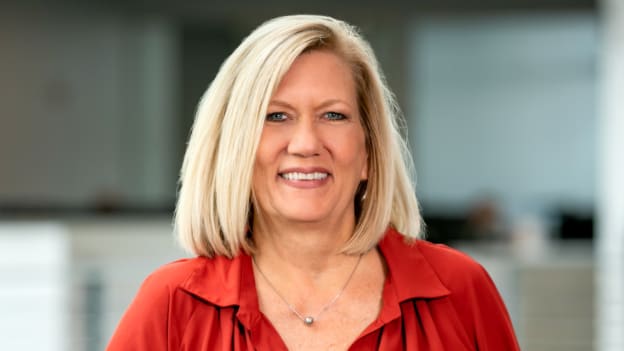Keeping employees happy amid a changing industry

READ the November 2021 issue of our magazine: Well-Being By Design
Once upon a time, HR in 'traditional' industries like manufacturing was really a recruiter's job: keep the production line manned with warm bodies, and not much else. But times have changed, and so has the industry outlook on manpower.
People Matters asked Susan Edwards, Global Vice President & Chief Human Resource Officer of global packaging manufacturer Sealed Air, what's changed in the last few decades and what the role of HR is in the industry today. Edwards, who has spent years in HR for major manufacturers, also believes strongly in the importance of employee well-being and happiness, even through major challenges like the pandemic. Here's what she shared, speaking from her experience.
An evolution of what 'talent' and 'talent management' mean
“I have worked in the manufacturing industry for my entire career and I can say over the past three decades the face of manufacturing has changed and the talent management strategy with it,” Edwards says. “What was once perceived as an industry of labour-intensive, manual jobs is now rapidly shifting into an environment where digital technologies, equipment and automation are the primary focus for manufacturing companies.”
HR's work is evolving accordingly to match the new business needs, she finds: 'It has been interesting to watch this shift in talent management. The focus has expanded from primary recruitment to equal parts retention, recognition and development of existing employees. And what attracts people to a job today is different in many ways than before the pandemic. People are much more focused on flexibility, well-being and other benefits beyond the salary. To stay competitive, we need to constantly review our hiring practices as well as rethinking ways to boost employee morale and well-being while also building organizational resilience and productivity.'
Given this shift, what does HR's primary role need to be today? It's sprawling and strategic, Edwards believes – going beyond the immediate needs of short-term people management, to extend into the long-term areas of policy and even business strategy.
'Our industry might be changing at a fast rate, but one thing remains unchanged: human capital remains the number one asset for any company,” she says. “HR also needs to be an agile business partner that works with other internal groups to ensure there are policies and procedures in place to keep employees safe and well, while also ensuring business needs are being met. This includes things like talent acquisition, reskilling or upskilling employees, and maintaining a workplace culture that supports productivity and work-life balance. These are key enablers of a company’s success and HR has an even more strategic role now to help the company anticipate and respond to wider challenges in business and society.'
The biggest mandate: keeping employees happy
Sealed Air has been operating in pandemic mode since last year, meaning that most of its sites are closed for employee safety and most of the non-location dependent employees are working remotely. During this period, Edwards says, she and her team have learned a lot about how to keep employees happy – a very serious business at a time when workforce well-being has emerged as a major factor in recruitment and retention.
The first thing, she says, was getting them settled into the new flexible working model and overcoming the stigma that working from home means people will not be as productive at work.
'When the pandemic first started, we had to move quickly to get as many people as possible out of harm’s way and in many cases – that meant asking them to work remotely,' she recalls. 'Now, almost two years later, I am happy to report that our teams have remained productive and safe throughout the pandemic and for many of them, that flexible way of work is going to continue post-pandemic.'
The key point here, Edwards believes, is not work-life balance – but work-life harmony. 'We want our employees to have work-life harmony and not feel like they must choose between having that kind of balance in all aspects of their lives,' she says. Sealed Air also made what Edwards describes as a “significant investment” into an employee well-being platform that is accessible by all its employees globally. It provides them with tools to manage their physical and mental well-being, including taking mental health breaks during the day if needed.
'We want to make sure that people are taking care of themselves, both in and out of work,' she says. Going forward, Edwards says flexibility will be a consistent feature of Sealed Air's workplace set-up. When the work sites reopen, she expects that one-fourth of the currently remote employees will remain remote, the rest will follow a hybrid approach, and all will have flexible work schedules. What's more, she and her team want to extend flexibility even to those employees whose work is on-site – a challenge that many other employers have sidestepped by simply not offering it.
'We’re looking into how we can provide our direct labour employees the ability to have more flexibility to help achieve a better work-life harmony,' she says. “It’s a bit more complicated when your work is dependent on your location, but we haven’t lost sight of the importance of equity when it comes to the benefits our employees can take advantage of.'
Embracing technology beyond business processes
Manufacturing is among the industries undergoing accelerated change, in part due to the pandemic's impact, and against this backdrop, automation and digital transformation are strategic imperatives for Sealed Air, Edwards says. There are two aspects here: firstly the company, as a whole, has become savvier about its use of technology and more accepting of the possibilities that technology opens up, and secondly, there has to be even more focus on the development of employees.
For example, she explains, the use of technology goes far beyond business processes, which would be the traditional focus for a manufacturing firm; it can become a very powerful tool for employee communications.
'Nearly two years into the pandemic, we are utilizing apps, digital signage and kiosks in our plants, virtual plant tours and townhalls to communicate and connect with employees in a more meaningful way than ever before,' she says of some of the initiatives Sealed Air has rolled out. And then there's the impact of technology on hiring, particularly for roles that don't involve direct labour – those can be done remotely, and even across borders.
'We’re finding that technology allows us to connect with people and source talent from a much larger talent pool,' Edwards says. 'We have a global footprint in over 100 countries. Our teams are now able to hire people from all over the world and thanks to technology, those teams can be productive and connected. This also allows us to bring diverse talent into areas where it may not have been possible before and that diversity is bringing better, more impactful ideas to the table.'
Upskilling and developing the existing workforce, meanwhile, is another imperative. 'When you go through the kind of rapid transformation that Sealed Air is currently experiencing, you have to accept the responsibility of training and reskilling your employees,' Edwards says.
'And that’s exactly what we’re doing. We want to make sure that our employees currently on the job can get the skills they need to be productive and have a long and happy career with us. We’re also investing in our communities at various places around the world by partnering with community colleges and technical schools to share knowledge and help prepare the workforce of the future.'
There are opportunities for upskilling in both manufacturing and non-manufacturing roles, she says: 'On the plant floor, there is an opportunity to use technology to further enhance safety and operational efficiency through automation and digital technologies. For sales, customer service and other non-manufacturing roles, it’s about the increased and creative use of technology to stay connected with customers, partners and suppliers.'
'Because of the challenges posed by lockdowns and border closures, we have seen great examples of virtual collaborations. One example is our China and Germany plant employees who were working virtually to test and refurbish equipment to meet customer needs. Another example is using virtual tools to share technical knowledge to help a customer install and commission a machine when we could not offer technical support in person.'
Keep the human in Human Resources
'The pandemic brought HR to the forefront of crisis management and business transformation to manage and mitigate risks to people and the business,” Edwards says. “It presented an opportunity to rethink our people's strategy and embrace new ways of thinking and working while learning to be more agile and flexible.'
That encompasses a great deal: the importance placed on not just flexibility and well-being alone, but on equitability in how these benefits are offered; the push to ensure that even as the company transforms, employees are able to keep up with the demands of the job; and the need to always bear in mind the impact on people as decisions are made.
Looking forward, Edwards believes that even as the environment and the company change, the emphasis on people won't.
'We are unlikely to revert to the pre-COVID days of working, but we will be taking learnings and best practices to ensure we do not lose sight of the human in Human Resources,' she says.














